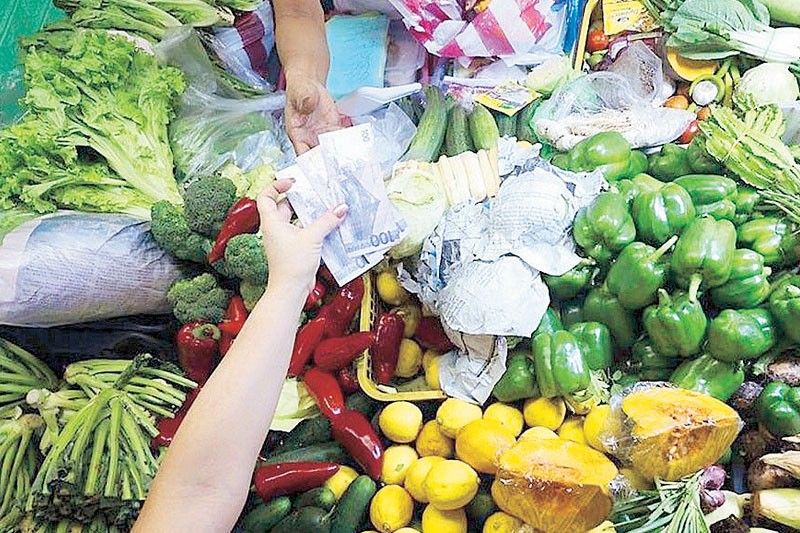Inflation pickup seen for 4th straight month

MANILA, Philippines — Economists believe inflation may have picked up for a fourth straight month in May, possibly hitting the central bank’s upper four percent target, due to unfavorable base effects and high electricity rates.
The Philippine Statistics Authority will release its May inflation data on June 5.
Sarah Tan, an economist from Moody’s Analytics, said headline inflation in the Philippines could pick up to 3.9 percent in May from 3.8 percent in April. Still, this would be the sixth straight month that inflation stayed within the two to four percent target range.
“Upward price pressures will come from higher electricity rates as retailers pass on higher costs from the Wholesale Electricity Spot Market amid a jump in electricity demand when temperatures spiked across the country in May,” Tan said.
On the other hand, food inflation may have moderated last month as rice prices stabilized, she said.
The Bangko Sentral ng Pilipinas (BSP) will also likely keep rates unchanged at its next policy review on June 27, Tan said. This was after the Monetary Board hiked the key interest rate by 450 basis points to 6.5 percent.
“It is unlikely that inflation will sharply exceed the BSP’s upper target of four percent, and so we don’t expect any hikes. A cooling core inflation reading will also give BSP confidence to keep the policy rate steady,” Tan said.
If inflation stays below four percent in May, it is possible for the BSP to make its first interest rate cut in August.
“Potentially higher electricity rates to come and further weakening of the peso will add inflationary pressures, but these will be cushioned by a moderation in food inflation as El Niño exits,” Tan said.
“Otherwise, the first cut may only come in the fourth quarter,” she added.
Makoto Tsuchiya, an economist at Oxford Economics, said the consumer price index (CPI) may rise to four percent in May due to unfavorable base effects.
“We expect the headline inflation to hover around four percent in the coming few months, but this is unlikely to make the BSP more hawkish, as such an overshoot is already priced in by the central bank,” he said.
Tsuchiya also sees the BSP starting to cut borrowing costs in the fourth quarter.
“Higher electricity rates could be an upside risk, but is unlikely to be a main source of much stronger inflation, as electricity only accounts for less than five percent of the CPI basket,” he said.
On the other hand, a weaker peso could add upward inflationary pressures through higher import prices. “But we continue to expect disinflation later this year, simply because base effects will likely outweigh any inflationary forces from a weaker currency,” he said.
Security Bank chief economist Robert Dan Roces also sees May inflation at four percent this May, with a range of 3.6 to 4.4 percent.
“We expect slower food price growth, although rice inflation remains a major culprit. However, rising utility costs and a weakening Philippine peso, which inflates import prices, will counteract this slowdown. Transportation costs, on the other hand, are projected to offer some relief,” he said.
Meanwhile, UnionBank chief economist Ruben Carlo Asuncion said May inflation could hit 3.8 percent in May, unchanged from a month ago, and could average at 3.3 percent this year.
“We expect headline inflation to plateau in the 3.9 to 4.1 percent range in June to July before falling to 3.4 percent in August and lower thereafter. In our updated CPI trajectory, inflation may ease to a low of 3.1 percent in December with 3.8 percent as the high case for the year-end inflation,” he said.
Risks to the inflation outlook have also moderated, which supports the case for a rate cut later in the year.
However, the BSP is unlikely to cut before the US Federal Reserve as the Monetary Board would wait until El Niño effects have receded, local food supply has normalized and rice inflation has materially narrowed.
“Sans a permanent settlement of the Gaza conflict, we are still vulnerable to geopolitical risk in the Middle East,” he said.
“While we believe there is still just cause to celebrate April inflation of less than four percent, gradual accumulation in the near-term rather than buying the dips aggressively is still the sober approach.”
- Latest
- Trending





























